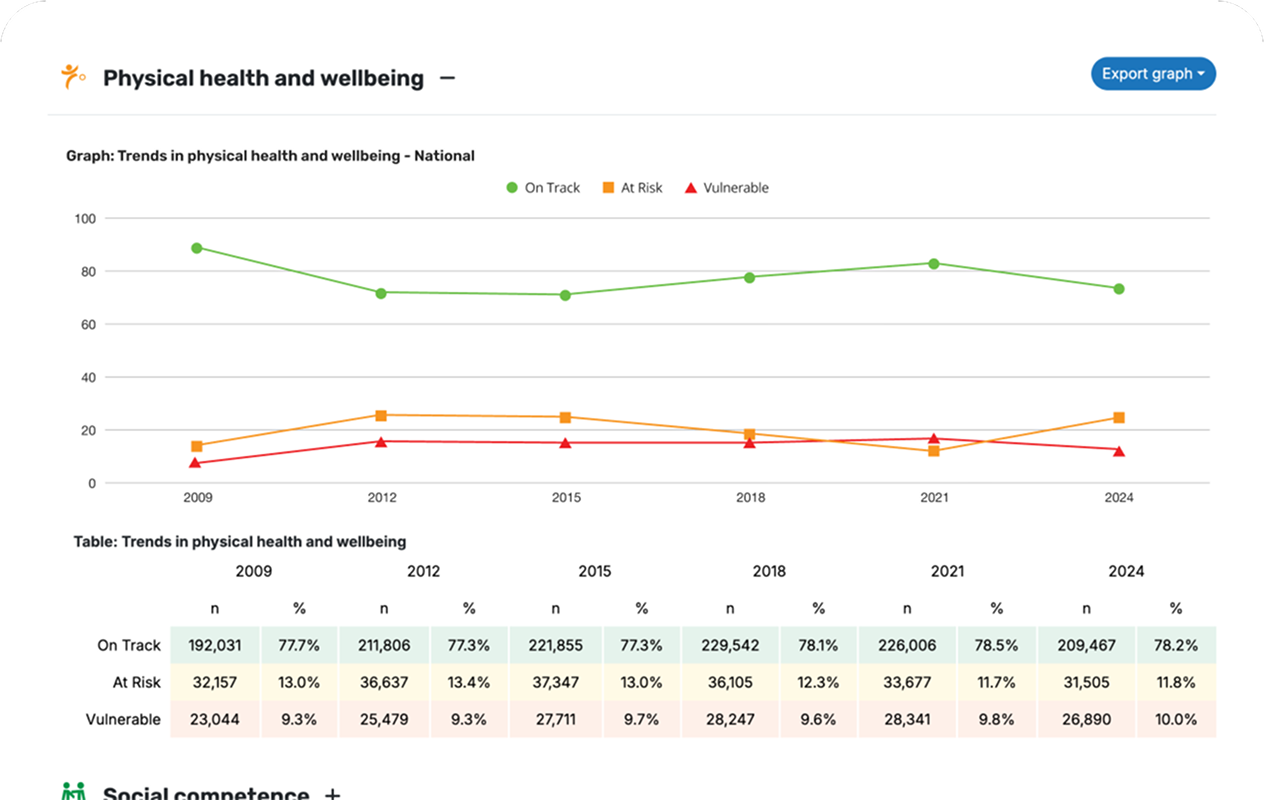Data by Local Government Area
Local Government Areas (LGAs) represent the whole geographical area of responsibility of an incorporated Local Government Council. In Queensland, this could also mean an Aboriginal or Island Council. In the Northern Territory, it could also mean a Community Government Council.
Data by LGA (2009-24)
.jpg?sfvrsn=270c9a3b_1)
Data by Australian Statistical Geography Standard
Statistical Areas Level 2 (SA2s) are medium-sized areas representing communities that interact socially and economically. Most have populations between 3,000 and 25,000 people.
Statistical Areas Level 3 (SA3s) are designed for the output of regional data. Most have populations between 30,000 and 130,000 people.
Statistical Areas Level 4 (SA4s) are designed for the output of a variety of regional data, representing labour markets and the functional area of capital cities. Most have populations over 100,000 people.
Data by Statistical Areas Level 2 (SA2s) (2009-24)
Data by Statistical Areas Level 3 (SA3s) (2009-24)
Data by Statistical Areas Level 4 (SA4s) (2009-24)
Data by GCCSA (2009-24)
Data by Remoteness (2009-24)
Data by SEIFA (2009-24)
Indigenous Locations (ILOCs) are geographic areas built from whole Statistical Area Level 1s. Indigenous Locations are designed to represent small Aboriginal and Torres Strait Islander communities (urban and rural) that are near each other or that share language, traditional borders or Native Title.
They usually have a minimum population of about 90 people. Sometimes, ILOCs have a smaller Aboriginal and Torres Strait Islander population to meet statistical requirements or to better represent the local community.
The ABS provide more information about ILOCs.
Data by ILOC (2009-24)
Australian Bureau of Statistics contextual data
QuickStats
QuickStats is a fast, simple way for users to understand an area at a glance and is intended for anyone wanting quick summary information about an area from the 2021 Census of Population and Housing (or earlier censuses back to 1996). Information can be retrieved by entering the name of the geographic area in the search box on the for a wide range of area classifications.
ABS community profiles
Community profiles are excellent tools for researching, planning and analysing geographic areas for a number of social, economic and demographic variables, providing outputs in the form of an Excel spreadsheet. More detailed information can be derived from Census TableBuilder, an online self-help tool designed for users who have a knowledge of Census concepts and some experience using Census data.
Population Health Information Development Unit (PHIDU) Social Health Atlases
PHIDU access
PHIDU has a range of free online access data through its Social Health Atlases. Data is available as tables and maps for Australia at various geographic levels, and includes AEDC data at the Indigenous Area level. The results from the AEDC provide communities and schools with information about how local First Nations children have developed by the time they start school across the five AEDC domains.
AEDC GIS data
Download AEDC GIS data for each state and territory.
Each .zip file contains the GIS data for Community, Local Community, Community by region and Local Community by region.
Australian Capital Territory GIS files
New South Wales GIS files
Northern Territory GIS files
Queensland GIS files
South Australia GIS files
Tasmania GIS files
Victoria GIS files
Western Australia GIS files
Other Territories GIS files
Community Data Explorer
Navigate the AEDC Community Data Explorer and understand the data.
